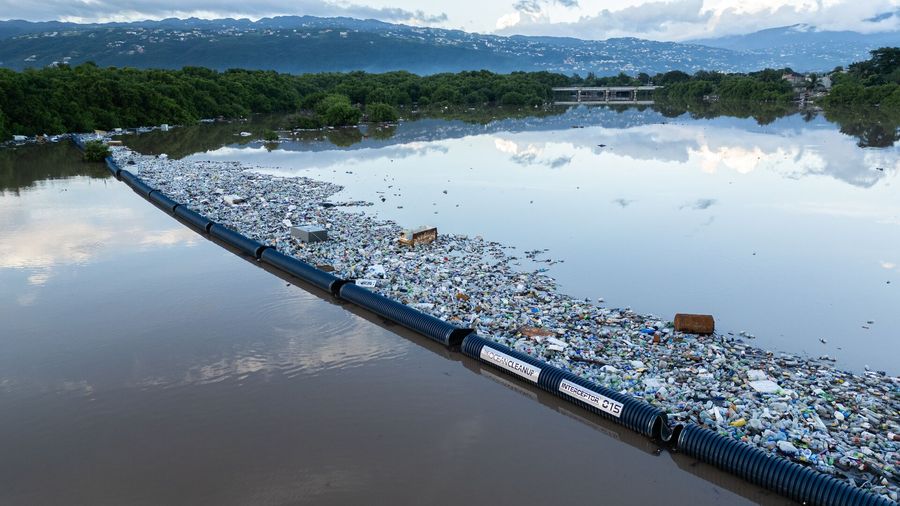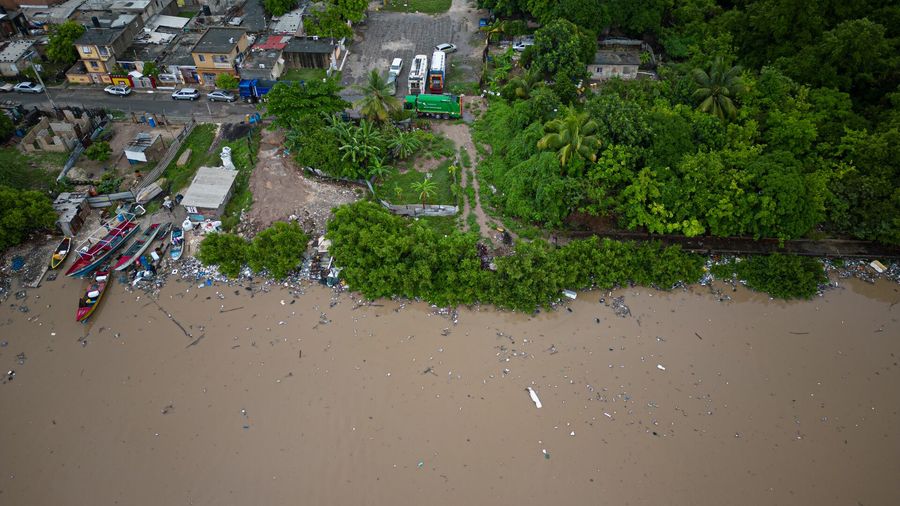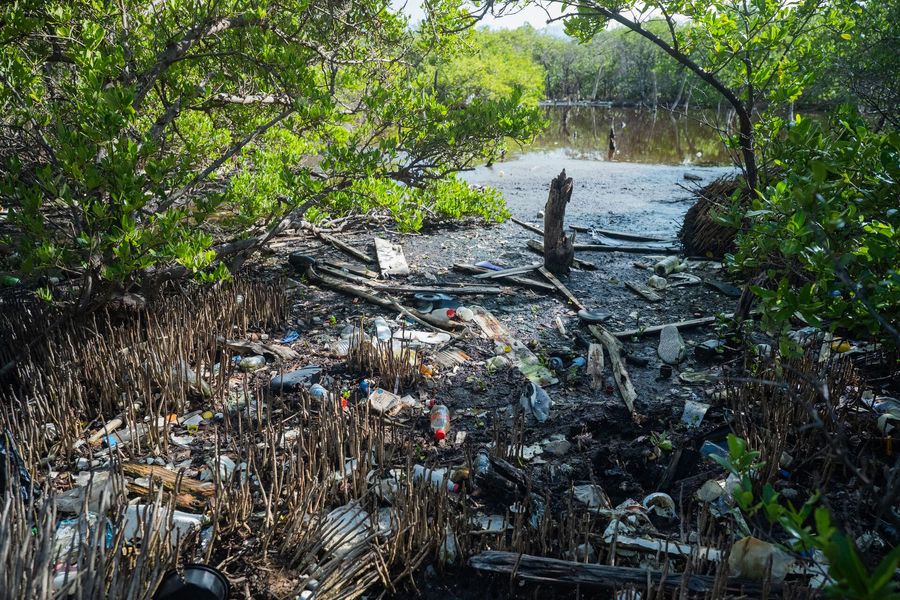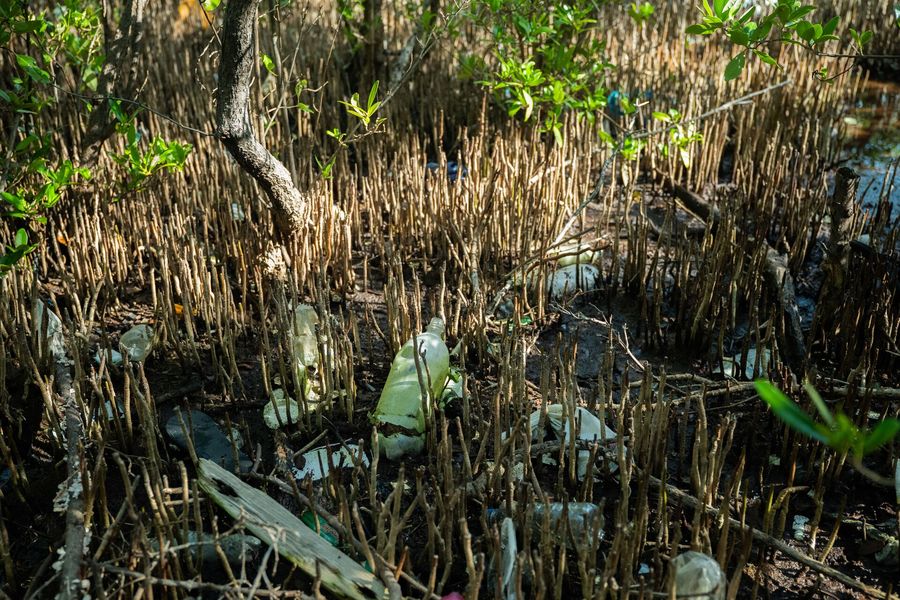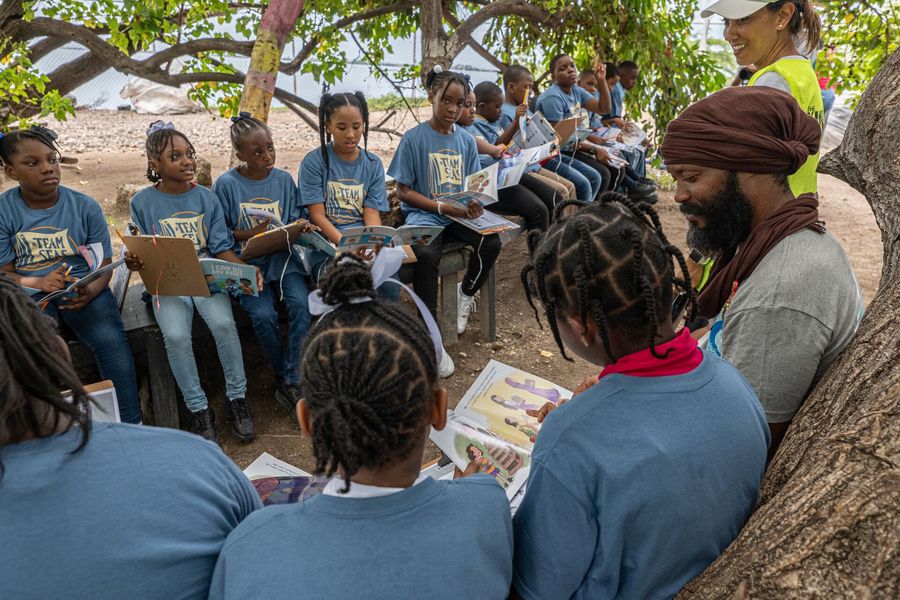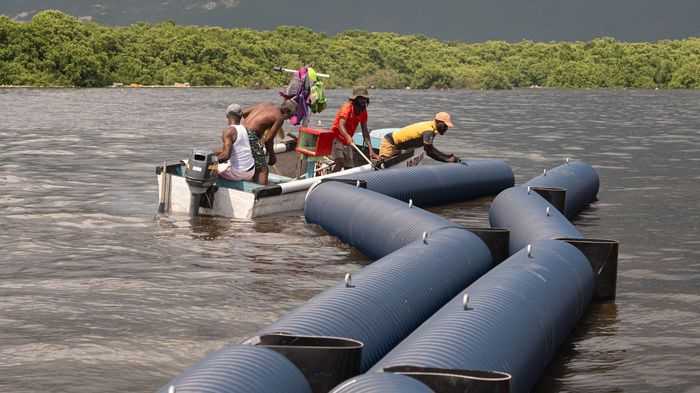
Kingston, Jamaica: our blueprint for a pragmatic approach to tackling plastic pollution and creating environmental and social impact
Back to updatesEarlier this year, we announced Kingston, Jamaica as our first Interceptor city after deploying seven Interceptors in the Jamaican capital. This also marked the completion of the first phase of a joint project called the Kingston Harbour Cleanup Project with GraceKennedy Foundation and Clean Harbours Jamaica to deploy a range of Interceptors throughout the cities’ drainage gullies to prevent trash from reaching the Caribbean Sea.
Since then, together with local stakeholders, we have used learnings and data gathered from our first deployments to expand our network of Interceptors across the city by deploying Interceptor 015 in Sandy Gully, the largest gully in Kingston.
However, deploying technologies to combat plastic pollution is just one aspect of our operations. Our goal is to create a positive impact, not only in terms of intercepted trash but also by protecting and restoring oceanic, coastal, and riverine environments and benefitting local communities.
MANGROVES: ECOLOGICAL POWERHOUSES
Jamaica’s coastal regions are home to diverse ecosystems, including mangroves, seagrasses, and coral reefs. All play crucial economic and social roles, such as reducing vulnerability to natural disasters and contributing to human welfare through their direct ecological advantages. The preservation and restoration of these coastal habitats are both necessary and beneficial.
Ranked as the world’s seventh deepest natural harbor, Kingston Harbour lies within the Palisadoes-Port Royal marine protected area. The harbor plays a vital role in Jamaica’s economy, particularly in the tourism and maritime sectors.
Surrounding Kingston Harbour lie approximately 300 hectares of mangrove forests. These fulfill essential ecological functions such as providing nurseries and feeding grounds for marine life, including commercially valuable species, while acting as natural barriers and safeguarding Kingston from erosion and flooding.
The World Bank estimates that Jamaica’s mangrove forests provide an annual flood reduction benefit of over US$32.7 million in terms of built capital protection and that the loss of the mangroves would increase the number of people affected by flooding by 10% each year.
THE SOCIAL, ENVIRONMENTAL, AND ECONOMIC COST OF PLASTIC POLLUTION
The gullies in Kingston manage stormwater and mitigate flooding by channeling it into Kingston Harbour. However, these gullies have become sources of waste contamination, primarily plastics. When these gullies become blocked by waste, it creates localized flooding and damage to infrastructure.
The situation in Kingston mirrors that of many developing nations, where waste frequently ends up in Kingston Harbour and the mangrove forests surrounding it due to careless disposal and inadequate waste management infrastructure. Due to tidal changes and wind patterns, plastic accumulates along coastlines and mangrove edges.
Plastic pollution that accumulates in mangrove ecosystems creates barriers that prevent seawater from moving in and out of the forest, increasing salinity and resulting in ecosystem degradation and loss of biodiversity. The deterioration of marine and coastal ecosystems also negatively impacts local livelihoods, as around 95% of Jamaica’s fishing industry is small-scale for domestic consumption.
Plastic pollution does not come without cost. Restoring mangroves to their natural state is costly, challenging, and has a low success rate. The average price of recent mangrove restoration projects in Jamaica has cost between US$63,000 and US$250,000 per hectare. This suggests that keeping plastic waste out of the harbor and mangroves is more economical, saving money and time that would otherwise be spent cleaning up legacy plastic debris.
A STAKEHOLDER-DRIVEN APPROACH
Once we have stopped the leakage from gullies, the next phase involves legacy debris cleanup, together with GraceKennedy Foundation and Clean Harbours Jamaica.
In April 2024, hundreds of volunteers and local communities took part in The Great Mangrove Cleanup, removing 21,000kg of legacy plastic pollution from beaches and shorelines. More recently, in early November, The Great Mangrove Cleanup Trash Tournament saw 21 boats filled with volunteers and fishermen remove over 8,000kg of waste from the mangroves. Along with our operations, we have directly intercepted over two million kilograms (4.4M lbs) of trash that would otherwise enter the harbor.
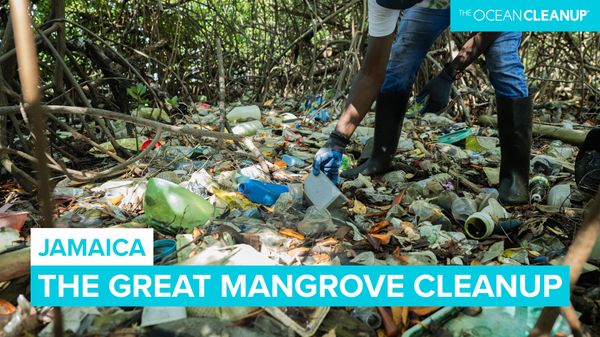
While cleaning up legacy plastic pollution is essential, we also need to prevent more plastic from entering waterways in the first place. Our river deployments are intended to act as catalysts within a community – intercepting plastic and providing solutions while enabling a community to drive systemic change further upstream.
By engaging government agencies and members of parliament in our processes (pre and post deployment), this drives attention of the relevant authorities to provide the enabling environment (such as laws, policies, regulations, and waste management infrastructure) that strengthens upstream actions.
In addition, GraceKennedy Foundation has been carrying out awareness campaigns in communities through their environmental warden program to influence behavioral change and community action. Youth are seen as powerful agents of change and a means to influence behavioral changes in their homes and for the future.
The Kingston Harbour project offloading site doubles as a teaching hub and a hands-on example of the waste management methodology, having engaged over 500 schoolchildren and youth already.
THE IMPORTANCE OF THE FISHING COMMUNITY
Nobody has seen the impact of plastic pollution so much as the local fishing community, who began feeling the impact of plastic pollution in the late 90’s, finding they had to travel further and further out to sea to be able to sustain their livelihoods. They want to see the environment returned to its original state, for their children and future generations.
Over the last four years, these local fishermen have stepped up to help. By providing their boats, time and labor, they have been pivotal in deploying Interceptors and carrying out manual cleanups in Kingston. As our boots on the ground, they keep an eye on our Interceptors and suggest changes to help improve our operations, as well as providing guidance for future deployments.
Through effective stakeholder engagement, we take a pragmatic and holistic approach to tackling plastic pollution in Jamaica while improving both environmental and socio-economic aspects for generations to come.
With Kingston as our rivers blueprint, we aim to apply this approach to other cities around the world to stem the inflow of waste into our oceans. Keep watching theoceancleanup.com and follow us on social media @theoceancleanup to see what’s next for Jamaica and rivers worldwide.


